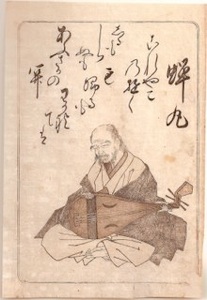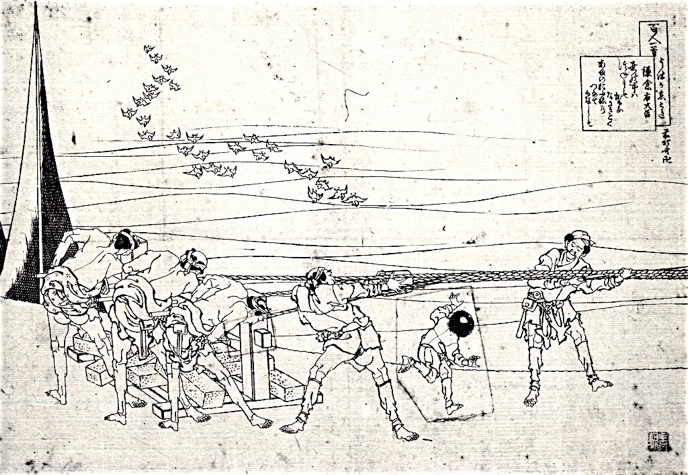鎌倉右大臣


世の中は
つねにもがもな
なぎさこぐ
あまの小舟の
綱手かなしも
かまくらのうだいじん
よのなかは
つねにもがもな
なぎさこぐ
あまのおぶねの
つなでかなしも
Minamoto no Sanetomo
If we could only
Hang on to this world
Like a little boat hauled in
To shore by fishermen
And moored so touchingly.
Hokusai



Minamoto no Sanetomo (1192 - 1219), also called Kamakura no Udaijin (Kamakura Minister of the Right), was a son of Yoritomo, the founder of the Kamakura shogunate. He became the third shogun of the Kamakura shogunate at the age of 12 (under Hojo Masako’s - his mother’s - regency). He was the last head of the Minamoto clan of Japan. His personal name was Senman. During the power struggles of his time, in which he sought the side of the now powerless and only honorary imperial court, he felt more attracted to writing poetry. He received his tuition in poetry from Teika. The last years of his young life were characterized by his despair and chronic alcoholism, and as he had feared he was assassinated (by his nephew, son of the second Kamakura shogun Yoriie) at the steps of the Tsurugaoka Hachiman Shrine (English) in Kamakura, thus ending the influence of the Minamoto clan.
He was a prolific writer of poems. The posthumous collection of his own poems is called the Kinkai Wakashu.
This poem has a sad undertone. Mogamo expresses a wish for something that is not going to happen, and gamona is ‘desirable, pleasant’ (reflected also in ganashi, ‘adorable, charming’ but also ‘sad, regrettable’). Tsune ni (always) resounds in tsuna de (mooring ropes).
Hokusai shows the real life of fishermen who labour hard to make their own ropes. Five men are twisting yarns to make thick ropes. One man is ready to cut the rope when the twisting is finished. On the left we see fishing nets hung up to dry. Plovers are diving down, probably to catch fish. Hokusai seems to imply that ‘hanging on to this world’, making a living, is hard work for these people.
